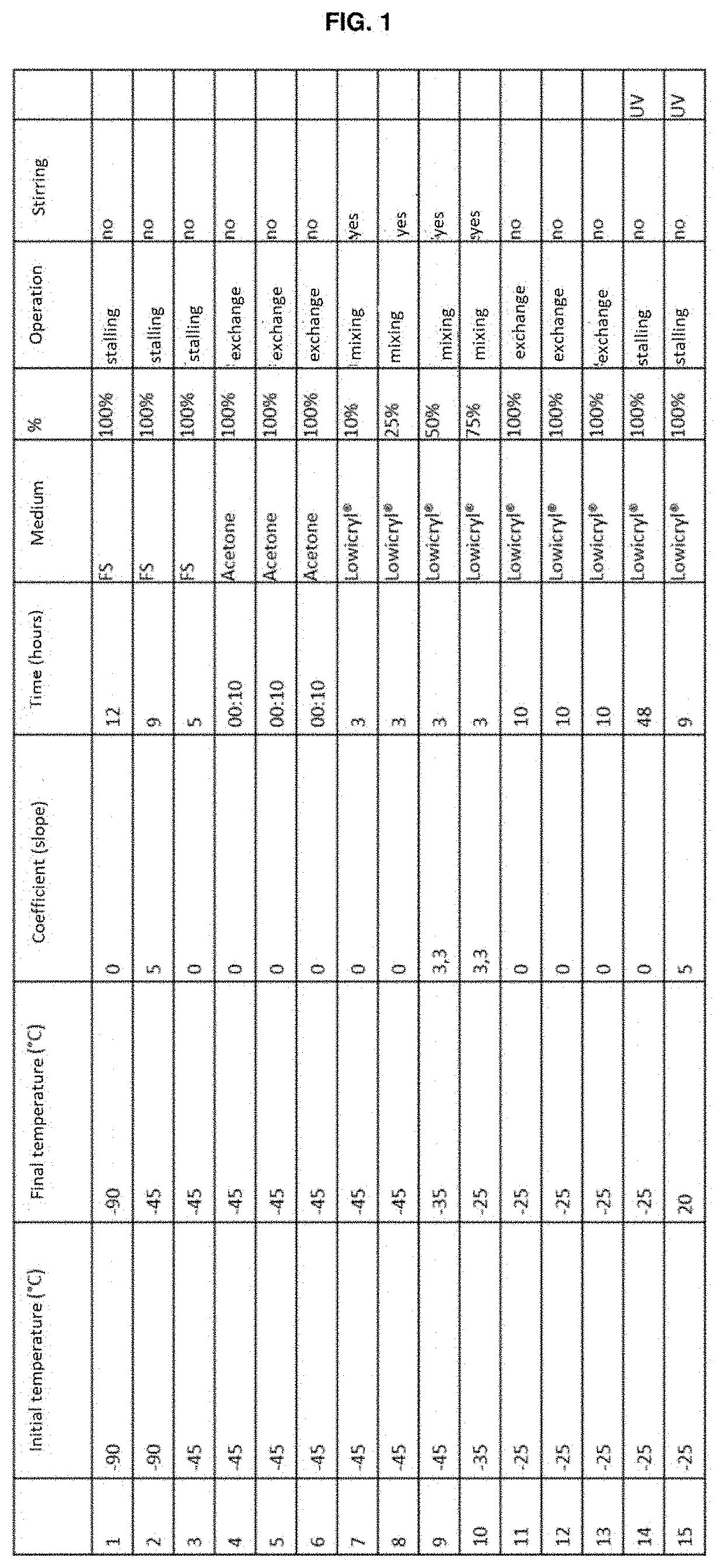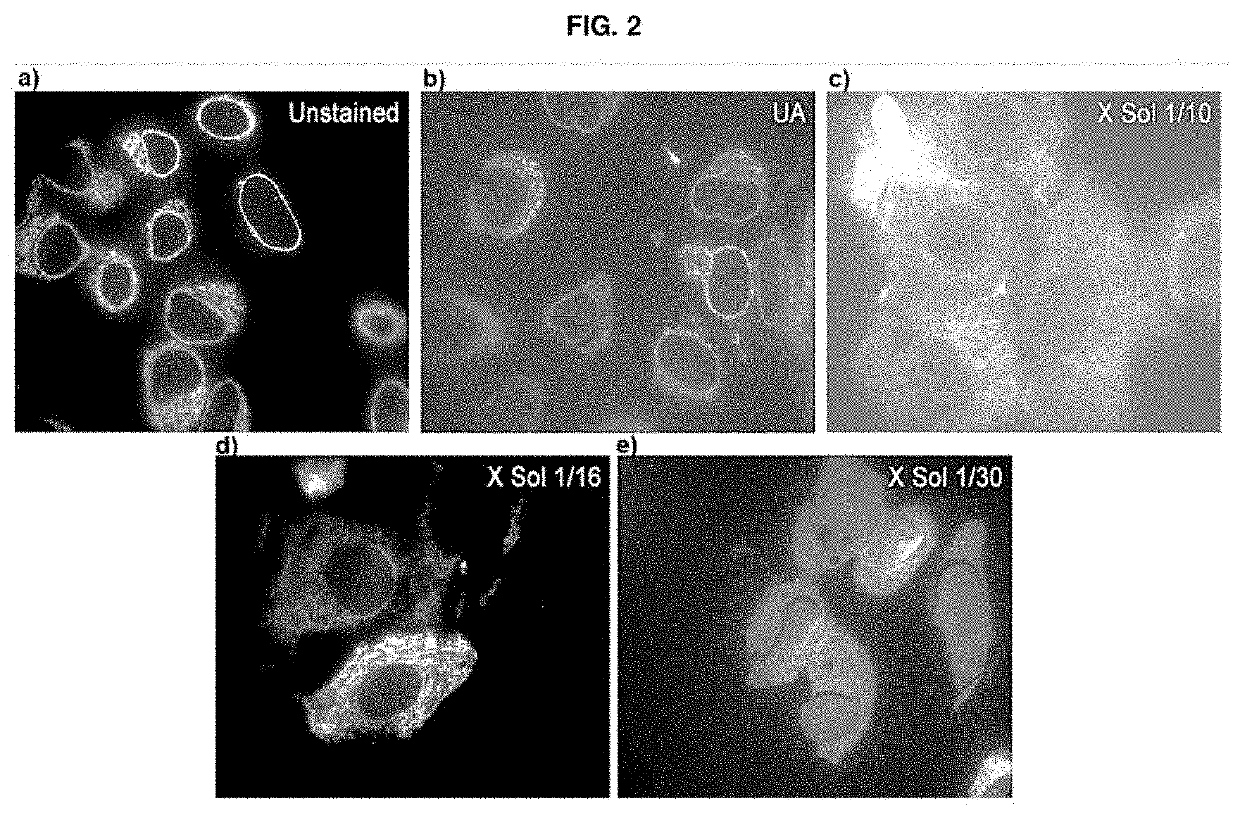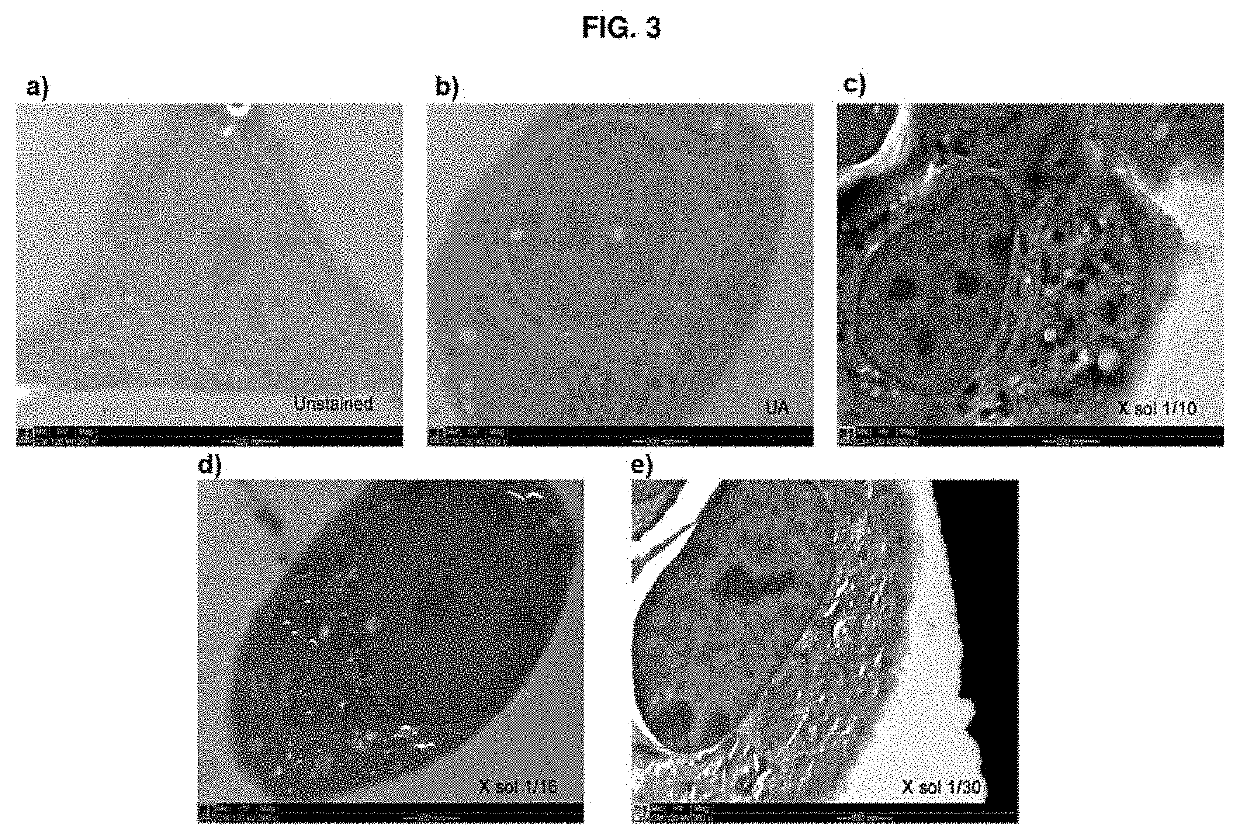Contrast solution for the characterisation of biological samples by electron or correlative microscopy
a technology of contrast solution, which is applied in the field of contrast solution for the characterisation of biological samples by electron or correlative microscopy, can solve the problems of severe restrictions, inability to produce satisfactory results, and high cost of delivery and disposal of uranyl acetate derivatives
- Summary
- Abstract
- Description
- Claims
- Application Information
AI Technical Summary
Benefits of technology
Problems solved by technology
Method used
Image
Examples
example 1
[0054]Preparation of the PTA-YbCl3 Solution (Stock Solution)
[0055]A solution of phosphotungstic acid (concentration 3.2 mM) in 10 ml of water / ethanol containing 20% (v / v) ethanol was prepared. The pH of this solution was brought to around 5 with sodium hydroxide 1 M. This solution had added to it an equal volume of an ytterbium chloride hexahydrate 48 mM (final concentration) solution in ethanol / water containing 20% (v / v) ethanol. The pH was again adjusted to 5 with sodium hydroxide 1 M. The mixture was kept under stirring overnight at room temperature. The solution thus obtained was called “X solution 1.5” and manifested a precipitate. The precipitate was removed by filtration and the pH was again adjusted to around 5 by adding a 20 mM solution of MES. The solution was then again kept under stirring overnight and again filtered, this time through a membrane with a pore size of 200 nm so as to obtain a solution free of precipitate and called “stock solution”. The stock solution was ...
example 2
[0056]Use of the Solution According to the Present Invention as a Contrast Agent for Characterisation by Correlative Microscopy (CLEM) Using the HPF / FS Protocol for Biological Samples.
[0057]The stock solution obtained as per example 1 (0.2 ml) was freeze-dried and reconstituted in 2 ml (“X Sol 1 / 10”), 3.2 ml (“X Sol 1 / 16”) or 6 ml (“X Sol 1 / 30”) of a water / acetone mixture containing 95% (v / v) acetone in order to obtain the solution according to the present invention, in three different concentrations, respectively.
[0058]Each solution was centrifuged and the supernatant was used as the substitution medium in the standard HPF / FS protocol (illustrated in FIG. 1) on line cell stably transfected with a fluorescent protein conjugated to the endoplasmic reticulum. These were used as the standard sample for the correlative protocols. The cells embedded with this protocol were processed by means of the technique of high-pressure freezing / substitution of water with an organic solvent at cryog...
example 3
[0061]Use of the Solution According to the Present Invention as a Contrast Agent for Characterisation by Correlative Microscopy (CLEM) with the HPF / FS Protocol for Biological Samples (Drosophila Oocyte)
[0062]An experiment similar to the one described in Example 2 was carried out using Drosophila oocytes as the biological sample and using ethanol as an organic solvent in the place of acetone. The images obtained are shown in FIG. 5.
[0063]The images obtained thus show that the solution of the present invention enables comparable results to be obtained in terms of fluorescence emission, while at the same time ensuring, however, better contrast than when a solution containing uranyl acetate is used, thus proving more effective in the case of characterisation by correlative microscopy (CLEM).
PUM
| Property | Measurement | Unit |
|---|---|---|
| molar ratio | aaaaa | aaaaa |
| molar ratio | aaaaa | aaaaa |
| molar ratio | aaaaa | aaaaa |
Abstract
Description
Claims
Application Information
 Login to View More
Login to View More - R&D
- Intellectual Property
- Life Sciences
- Materials
- Tech Scout
- Unparalleled Data Quality
- Higher Quality Content
- 60% Fewer Hallucinations
Browse by: Latest US Patents, China's latest patents, Technical Efficacy Thesaurus, Application Domain, Technology Topic, Popular Technical Reports.
© 2025 PatSnap. All rights reserved.Legal|Privacy policy|Modern Slavery Act Transparency Statement|Sitemap|About US| Contact US: help@patsnap.com



